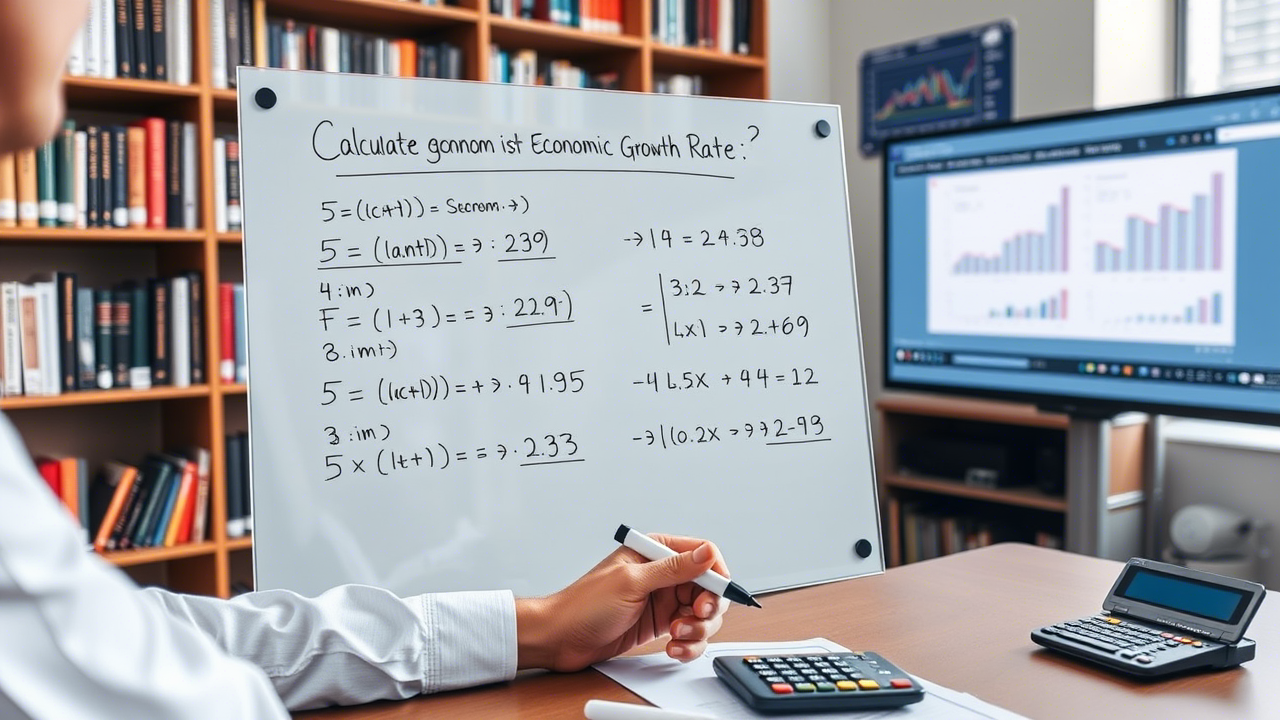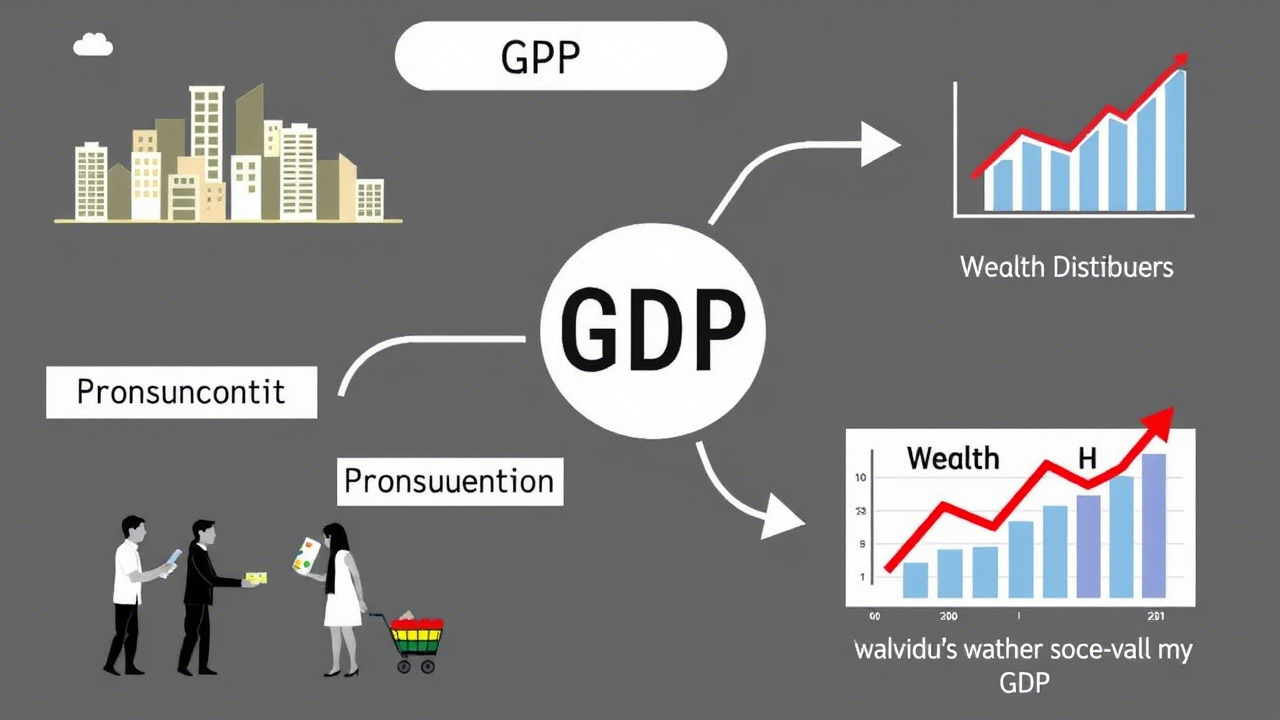
Has it ever occurred to you that the economy gets better or worse? It is jobs, incomes, and carries even government programs that have some effects on you, your business, and the country as a whole. The calculation of economic growth rate makes it look really complicated. But worry not for it’s easy as ABC! This guide has breakdowns on the whole thing. You’ll know the formula, actual data needed, and common mistakes to avoid. Ready to learn how the economy ticks? Let’s start.
Understanding the Basic Concepts in Economic Growth
Economic growth indicates how a nation’s economy is increasing. It can be understood as an increase in the value of goods and services produced over time by a country. It is most often measured by what we call GDP. Let’s check out what this is all about!
What is Economic Growth?
When a country produces more and more goods and services, that means economic growth is achieved. Think of it as getting bigger by making things. This increase can be expressed as a percentage. The higher the percentage, the more growth within the country.
The Role of GDP in Measuring Growth
The main measurement of economic growth is the Gross Domestic Product, popularly known as GDP. If we sum up what a country has produced as a whole, we can try to measure its performances fairly. By increasing its consumption, investment, government spending, and net exports, we get a higher GDP- if it all increases it means higher economic growth. The reason why most economists depend mostly on GDP information.
Nominal vs. Real GDP: Which to Use?
There are two types of GDP-“nominal” GDP as well as “real” GDP. Current prices are made apparent by nominal GDP. Real GDP is that which considers inflation. This means the reality of growth is made more apparent by real GDP. Calculate economic growth rate using the real GDP. Why? Because it considers the rising prices.
The Formula for Calculating the Economic Growth Rate
Let’s talk about the formula. Its a simple formula. This formula compares a GDP one year versus the previous year. By this formula, you can follow up the changes in the economy.
The Simple Equation of Economic Growth Rate
Here is the formula:
Economic Growth Rate = ((GDP in Current Year – GDP in Previous Year) / GDP in Previous Year) * 100
This calculation gives either a percentage increase or reduction – it gives you the growth.
Breaking the Equation: Explanation of Variables
“GDP in Current Year” is the real GDP figure for the year you’re looking at. “GDP in Previous Year” is the real GDP figure for the year before. Always remember: only real GDP numbers!
Finding the Data: Sources and Considerations
So where to find GDP data? Here are a few reliable sources that publish the GDP information thus collected. Let’s check a few. Also, ensure that your data is solid.
Reliable Data Sources: Government Agencies
Indeed, government agencies provide GDP data havens. The Bureau of Economic Analysis (BEA) provides GDP figures in the US. In Europe, one can find this number from Eurostat. Most often these sources are reliable without charge.
International Organizations: IMF and World Bank
International organizations also aggregate and publish GDP figures. The IMF and the World Bank will serve as two of the most trusted sources because their methods of collecting data slightly defer. But still, they are a good source.
Data Compatibility and Accuracy
Use the same source when comparing years. If you have a final revised figure, do not use a preliminary one. Consistency gives accuracy. Different sources might cause a skew in the estimates.
Step by Step Calculation with Examples
Let’s do an example to see how this works. This will bring clarity to them. This will help you better understand the calculation.
Example Scenario: Using Real GDP Data
Suppose, the country had a real GDP of $10 trillion last year. This year it will be $10.5 trillion. Now use these numbers in the formula.
Doing the Calculation: A Practical Demonstration
Here’s how to calculate the growth rate:
((10.5 trillion – 10 trillion) / 10 trillion) * 100 = 5%
The economic growth rate is 5%. It indicates that it is 5% larger than last year.
Interpreting the Economic Growth Rate
So, what does that 5 percent growth rate stand for? It doesn’t make a whole lot of difference in gauging whether the economy is healthy or not. So, let’s interpret that a little more.
The Growth Rate: What Does it Means?
A positive growth rate like 5%, means the economy is expanding. This brings with it more jobs and investment. Negative growth means depressing conditions in the economy. Keep an eye on this rate really.
Factors Affecting Economic Growth
A lot of factors can affect the level of economic growth. Technology, government policies, and global events are examples of these things. Acceleration and deceleration on the economy can be brought by this. Always bear in mind these factors.
Common Pitfalls and How to Avoid Them
Many times, there could be mistakes while calculating economic growth. Here is how to avoid some of them so that you can get true data.
Inflation Ignoring: Importance of Real GDP
One of the common mistakes is to calculate nominal GDP instead of real GDP. Nominal GDP does not consider inflation which makes growth look too good. Real GDP is always required.
Using Inconsistent Data Sources
Using inconsistent data sources for different years also creates hindrances. Always use one source. It guarantees that the comparison is valid.
Conclusion
The formula which is simple and data that is reliable is the key to calculating the economic growth rate. The percentage change in the real GDP of a country is what it will show. Apply real GDP, keep data sources consistent, and avoid common mistakes. Interested to explore more? Read reports from the government agencies and international organizations! Now, you are set to track and understand the economic growth.



